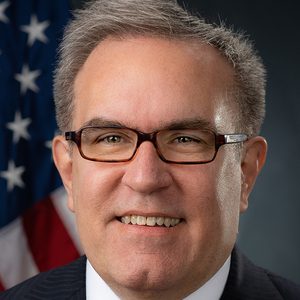Wheeler discusses expected delays in 2021 RVOs, gap year SREs

August 17, 2020
BY Erin Krueger
U.S. EPA Administrator Andrew Wheeler on Aug. 11 said work is ongoing to review gap year small refinery exemption (SRE) waivers and issue a proposed rule to set 2021 renewable volume obligations (RVOs) under the Renewable Fuel Standard. He was unable, however, to specify when those tasks will be complete.
Wheeler was questioned by local press on gap year SREs and the 2021 RVOs during a visit to the Deer Run Dairy in Kwaunee, Wisconsin.
Advertisement
Wheeler confirmed that the DOE has finished its review of many gap year SRE petitions and began sending the petitions back to EPA in recent weeks. “I’m not sure how long its going to take us to review them,” Wheeler said, noting that the gap year SRE petitions are trickier to review than normal SRE petitions because of their retroactive nature.
Some gap year SRE petitions filed to date go back as far as 2012. Wheeler said he has some questions with regard to how the EPA should handle the waivers. He said he’s unsure how a refinery can prove it experienced economic harm in 2012 if it is still in existence today. He also said the agency is unclear how it would offer a remedy in the event a refinery was able to demonstrate economic harm. “The appropriate remedy would not be to give people current year RINs for something from 2012 or 2013, and you can’t give them RINs for 2012 or 2013 because those RINs are worthless now,” he said.
Advertisement
Wheeler said his staff has just started reviewing the gap year SRE petitions and is unclear how long the process will take. “Hopefully we have all the data we need,” he said, but noted the agency might have to ask for additional data from petitioners. “I don’t know at this point,” he added.
The EPA is also facing unusual challenges in setting the 2021 RVO, Wheeler said, citing the impacts of the COVID-19 pandemic. While the EPA did send a proposed rule to the White House Office of Management and Budget in May, Wheeler said the agency started work on that rulemaking package before COVID-19 hit. “The entire landscape has changed since then,” Wheeler said, noting both the refining and ethanol sectors have been hard hit by pandemic. EPA is still trying to go through all the data to determine what effect COVID-19 will have on the 2021 RVOs. While it does not look like the rulemaking will be completed by its Nov. 30 statutory deadline, Wheeler stressed the rulemaking will also not be two years late.
Related Stories
The U.S. Energy Information Administration maintained its forecast for 2025 and 2026 biodiesel, renewable diesel and sustainable aviation fuel (SAF) production in its latest Short-Term Energy Outlook, released July 8.
XCF Global Inc. on July 10 shared its strategic plan to invest close to $1 billion in developing a network of SAF production facilities, expanding its U.S. footprint, and advancing its international growth strategy.
U.S. fuel ethanol capacity fell slightly in April, while biodiesel and renewable diesel capacity held steady, according to data released by the U.S. EIA on June 30. Feedstock consumption was down when compared to the previous month.
XCF Global Inc. on July 8 provided a production update on its flagship New Rise Reno facility, underscoring that the plant has successfully produced SAF, renewable diesel, and renewable naphtha during its initial ramp-up.
The U.S. EPA on July 8 hosted virtual public hearing to gather input on the agency’s recently released proposed rule to set 2026 and 2027 RFS RVOs. Members of the biofuel industry were among those to offer testimony during the event.
Upcoming Events










